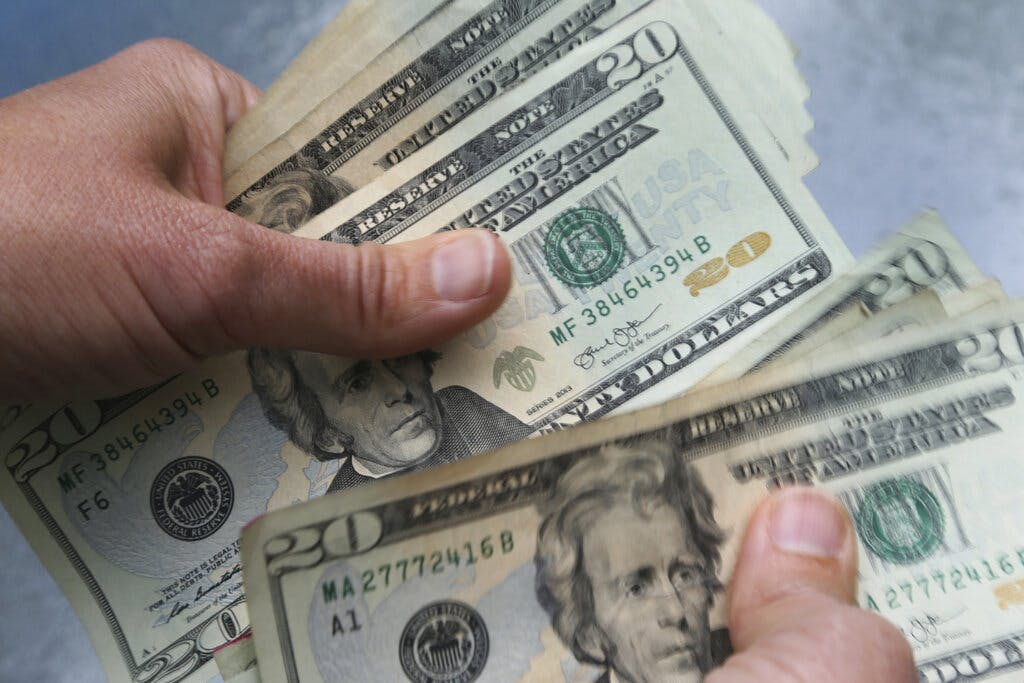Why Is the Fed Losing Money When It Does Such a Handsome Business With Irredeemable Paper Money Abroad?
At some point a leader will step forward prepared to call the central bank out on its losses.

The Federal Reserve issues the most successful irredeemable, pure fiat circulating paper currency in world history, in other words, dollar bills. These printed pieces of paper are formally titled “Federal Reserve Notes,” but they are not really notes, because a note is a promise to pay, and Federal Reserve Notes don’t promise to pay anything at all.
Under the original Federal Reserve Act of 1913, Federal Reserve Notes really were notes. Against them the Federal Reserve promised to pay — and did indeed pay for its first 20 years — gold coin to redeem them. The Federal Reserve Banks were required to hold gold in reserve to make these promises credible. No more, of course.
The Federal Reserve, unlike many other contemporary central banks, now owns zero gold. The only promise the current Fed makes is that it will depreciate the purchasing power of its dollars forever, trying for a depreciation rate of 2 percent per year. In other words, it aims for an 80 percent depreciation over an average human lifetime.
There is a lot of the Fed’s paper currency in circulation — in total value about $2.3 trillion. This compares to $492 billion 25 years ago. Meaning, in one generation, the Fed’s paper money in circulation has increased to 4.7 times its 1998 amount, far faster than nominal GDP, which has grown to 3.0 times its 1998 level.
In 1998, Federal Reserve Notes in circulation were equal to 5.4 percent of GDP. This ratio soared to 8.4 percent in 2023, for an increase of 56 percent relative to GDP. How can this have happened when all those years were marked by constant discussions of how we were moving to a cashless society?
And how can it have happened when everybody can observe the increasing use of credit cards or electronic payments instead of currency? I keep being surprised by how my own grown children are content to go around with hardly any cash, and how many people pay with cards for trivially small purchases.
So why has the Fed’s paper currency outstanding increased so much? An instructive contrast is with Canada, a neighboring economy with a sophisticated financial system. The Bank of Canada had C$118 billion in its fiat paper currency in circulation as of September 30, 2023 — 4.1 percent of the Canadian GDP.
Thus, relative to GDP, the Fed has more than twice the amount of paper currency circulating as does the Bank of Canada. Why? The reason is that the Bank of Canada is only the central bank of Canada, while the Fed is in important respects the central bank of the world.
That means that America’s paper currency, in spite of the Fed’s constant depreciation of its purchasing power, is widely used in numerous other countries, as superior to whatever money is printed up locally. The Fed has estimated that as of 2021, “foreigners held $950 billion in U.S. banknotes.”
That comes to “about 45% of all Federal Reserve Notes outstanding, including two-thirds of all $100 bills.” Updating to 2023, we can guess that foreigners hold approximately $1 trillion in American dollar bills. This constitutes a handsome and profitable international business for the Fed.
Its paper currency, with little cost to produce, provides zero-interest funding, which the Fed invests in interest-bearing securities. This makes profit as easily as falling off a log. With market interest rates at 5 percent, those $1 trillion in dollar bills are worth about $50 billion a year in net interest income for the Fed.
Thank you, foreign dollar bill holders. The remaining $1.3 trillion of domestically held currency is worth a net interest income of $65 billion a year, for a combined total of about $115 billion a year. This is why the Fed should always be profitable. And yet — what do you know? — it has become the opposite.
In 2023, the Fed racked up a net loss of the truly remarkable sum of $114 billion. In other words, it ran through its whole margin on currency issuance plus another $114 billion, and its losses continue in 2024 at about $28 billion for the first quarter. Just to mark the point, these losses are highly newsworthy.
The losses result from the Fed’s $6.3 trillion of investments in long-term Treasury bonds and mortgage securities yielding on average a mere 2 percent or so, while the Fed now must pay more than 5 percent on its own deposits and borrowings, putting it financially upside down.
In short, despite its profitable international business of currency printing, the Fed is suffering giant net losses in the same fashion as typical 1980s savings and loans did. This scandal has yet come into focus for the American public, but it’s a fair bet that it will do so — if the right leader steps forward.

